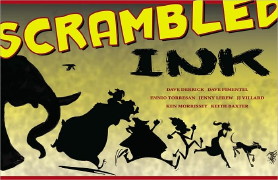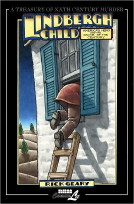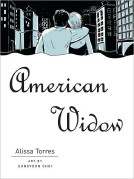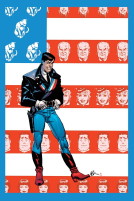Review: ‘Scrambled Ink’

Scrambled Ink
Edited by Anonymous
Dark Horse, July 2008, $19.99
[[[Scrambled Ink]]] is the latest in the recent flurry of comics anthologies by animators, following the high-profile and very successful Flight series (which recently hit its fifth volume) and the slightly newer but still popular [[[Out of Picture]]] (which had a second volume earlier this year). It was published quietly a few months back, and doesn’t seem to have made much of a stir.
And that’s a real shame, since Scrambled Ink is more inventive and ambitious than the most recent [[[Flight]]] and Out of Picture books put together. (And that despite Scrambled Ink being a physically smaller book with only six stories in it.) I’m not sure why that would be – Scrambled Ink comes from animators who worked on [[[Bee Movie]]], not what one thinks of as an excitingly transgressive piece of cinema – but these DreamWorks animators are definitely doing something different from their Blue Sky compatriots from Out of Picture.
Two of the tales in Scrambled Ink – “[[[Kadogo: The Next Big Thing]]]” by David G. Derrick, Jr. and Ken Morrissey & Keith Baxter’s “[[[Greedy Grizzly]]]” – would have been right at home in one of the other anthologies: they’re morality tales, with animal casts, that could easily have been afterschool specials or “heartwarming” animated shorts. Both also have excellent art – Derrick with an earth-toned watercolor palette very appropriate to his African story and Baxter with an appealingly loose version of a cute-animal children’s’ book style. These stories could have fit in perfectly well in [[[Flight 12]]] or Out of Picture 9, but here in Scrambled Ink, they’re notable for seeming a little less refined and a little more obvious than the other four stories.



 In this space on Friday and Saturday, my esteemed colleagues Mr. Davis and Ms. Thomases waxed on about the political situation of the day. Whereas there is no more important issue facing us as Americans in this moment in time (and it has considerable impact on non-Americans as well), I will not follow in their wake this week. I’m sure I will in the future.
In this space on Friday and Saturday, my esteemed colleagues Mr. Davis and Ms. Thomases waxed on about the political situation of the day. Whereas there is no more important issue facing us as Americans in this moment in time (and it has considerable impact on non-Americans as well), I will not follow in their wake this week. I’m sure I will in the future. John McCain, in what is assumed to be an attempt to woo feminist Hillary Clinton supporters, nominated an inexperienced first-term governor of Alaska as his running mate. In state-wide office less than two years, Sarah Palin includes in her resume a term as mayor of a small town, and a stint on her local PTA.
John McCain, in what is assumed to be an attempt to woo feminist Hillary Clinton supporters, nominated an inexperienced first-term governor of Alaska as his running mate. In state-wide office less than two years, Sarah Palin includes in her resume a term as mayor of a small town, and a stint on her local PTA.
 Martin Luther King was never a prisoner of war like John McCain. Nelson Mandela never flew a combat mission over Viet Nam like John McCain. Gandhi was never a commanding officer like John McCain.
Martin Luther King was never a prisoner of war like John McCain. Nelson Mandela never flew a combat mission over Viet Nam like John McCain. Gandhi was never a commanding officer like John McCain.
 Humans have been fascinated by felines both big and small since the beginnings of recorded history. At times we’ve both worshipped them (as did the ancient Egyptians) and reviled them (as did medieval Europeans, thus opening themselves up to the spread of the Black Plague when the witchcraft-associated kitties weren’t around in sufficient numbers to keep the rats at bay). And they’ve probably always been a big part of our
Humans have been fascinated by felines both big and small since the beginnings of recorded history. At times we’ve both worshipped them (as did the ancient Egyptians) and reviled them (as did medieval Europeans, thus opening themselves up to the spread of the Black Plague when the witchcraft-associated kitties weren’t around in sufficient numbers to keep the rats at bay). And they’ve probably always been a big part of our 

 We’re all familiar with the story of Jerry Siegel and Joe Shuster. They created Superman but nobody would buy it so it sat in a drawer for a few years until an editor remembered seeing the submission and thought it would fill out the first issue of a new title that was lacking a lead story. Siegel and Shuster signed away their rights for something slightly in excess of a hundred bucks, although over the next decade they earned hundreds of thousands off of the property. The trouble is, the publisher was making millions.
We’re all familiar with the story of Jerry Siegel and Joe Shuster. They created Superman but nobody would buy it so it sat in a drawer for a few years until an editor remembered seeing the submission and thought it would fill out the first issue of a new title that was lacking a lead story. Siegel and Shuster signed away their rights for something slightly in excess of a hundred bucks, although over the next decade they earned hundreds of thousands off of the property. The trouble is, the publisher was making millions. 








